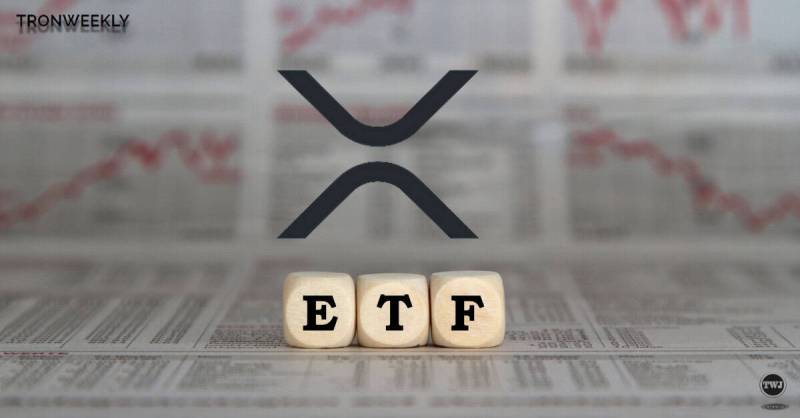 |
|
 |
|
 |
|
 |
|
 |
|
 |
|
 |
|
 |
|
 |
|
 |
|
 |
|
 |
|
 |
|
 |
|
 |
|
Cryptocurrency News Articles
The Untold Truths of Tether: Secure Your Crypto Journey Today
Feb 15, 2025 at 05:45 pm
Diving Deeper into Tether: How-To Steps, Use Cases, and Market Trends. By accessing our website, you agree to our Terms of Use and Privacy Policy.

Beneath the glittering skyline of the crypto universe, Tether stands as a bastion of stability and intrigue. This pioneer of stablecoins, forever tied to the whispers of the digital marketplace, claims a one-to-one backing with the US dollar, a promise that feels as solid as smoke to its skeptics.
Since its creation in 2014, Tether has nestled itself into the upper echelons of cryptocurrency, becoming the most significant by market capitalization. Yet, its journey is shadowed by controversy.
Born from innovators like Reeve Collins and investors like Brock Pierce, Tether originally flourished through the Omni Layer but has since expanded its reach across multiple blockchains. Its dynamics allow seamless transitions between USD and crypto, a tether that is meant to hold firm even in the digital storm.
The intrigue deepens with its association to Bitfinex, the cryptocurrency exchange embroiled in accusations of using Tether to camouflage financial discrepancies amounting to $850 million. Today, Tether teeters at the edge with a minuscule drift from its pegged value. This stability (or lack thereof) sparks constant debate about its reliability.
Despite its tumultuous path, digital currencies writhe towards legitimacy, catching the eye of enterprises and governments. Encrypted transactions provide an allure of security, yet they dwell in a land beyond conventional regulation. As interest in these digital assets fluctuates, prices soar and plummet tethered to the ebb and flow of demand.
Ultimately, those venturing into this volatile domain must brace for the high stakes. The unpredictable tides can swell fortunes overnight—or wash them away. Tether and its kin, like ethereal specters, attract dreamers and daring investors, dancing on the fine line of innovation and instability.
The Untold Truths of Tether: Secure Your Crypto Journey Today
Diving Deeper into Tether: How-To Steps, Use Cases, and Market Trends
How-To Steps & Life Hacks: Using Tether Effectively
1. Setting up a Tether Wallet: Choose between hardware wallets, software wallets, or exchanges that support Tether (USDT). Ensure your chosen platform is reputable and secure.
2. Tether Trading Basics: Use exchanges like Binance or Kraken to trade USDT for other cryptocurrencies. Always check fees and withdrawal policies.
3. Transferring Tether: Send USDT across networks like Ethereum, Tron, or others that support Tether. Double-check addresses, as crypto transactions are irreversible.
4. Using Tether for Remittances: Utilize USDT to send money internationally with lower fees than traditional bank transfers.
Real-World Use Cases
– International Remittances: Tether provides a stable medium for sending money across borders without fluctuating in value, appealing to expatriates.
– Crypto Trading: Traders use Tether to hedge against market volatility, allowing them to secure profits without exiting the crypto market entirely.
– Decentralized Finance (DeFi): USDT is widely used in DeFi platforms for lending, borrowing, and liquidity mining, offering better returns than traditional finance.
Market Forecasts & Industry Trends
The stablecoin market is projected to grow significantly as digital transactions become more mainstream. According to a report by MarketsandMarkets, the global cryptocurrency market is expected to reach $1,758 million by 2027, with stablecoins like Tether playing a crucial role in this expansion.
Reviews & Comparisons
Compared to its rivals like USDC and Dai, Tether is often criticized for its alleged lack of transparency and auditability. However, it remains the dominant stablecoin by market cap. Tools like CoinMarketCap and Messari provide data comparisons and insights into daily trading volumes and liquidity.
Controversies & Limitations
Tether’s connection to Bitfinex and its opaque audits continue to stir skepticism. Critics argue that Tether’s claimed reserves lack full transparency, raising questions about its one-to-one dollar backing. It’s vital for users to be aware of these concerns before engaging heavily with USDT.
Features, Specs & Pricing
– Blockchain Support: Tether operates on multiple blockchains, including Ethereum, Tron, and Solana, providing flexibility and ease of use.
– Transaction Speed: Varies by blockchain, with some networks offering faster transaction times and lower fees than others.
Security & Sustainability
While Tether transactions benefit from blockchain security features, users must still apply personal security measures, such as enabling two-factor authentication (2FA) and safeguarding private keys. The environmental impact of Tether is largely dependent on the blockchain it operates on; for example, networks like Ethereum were previously energy-intensive.
Insights & Predictions
As the regulatory framework around stablecoins evolves, Tether may face increased scrutiny. However, the demand for stable financial products in crypto will likely sustain its relevance.
Tutorials & Compatibility
Tether is compatible with most major cryptocurrency exchanges and wallets. For beginners, tutorials on platforms like YouTube can provide visual guides on setting up wallets and conducting transactions.
Pros & Cons Overview
Pros:
– Widely accepted and integrated across multiple
Disclaimer:info@kdj.com
The information provided is not trading advice. kdj.com does not assume any responsibility for any investments made based on the information provided in this article. Cryptocurrencies are highly volatile and it is highly recommended that you invest with caution after thorough research!
If you believe that the content used on this website infringes your copyright, please contact us immediately (info@kdj.com) and we will delete it promptly.
-

-

-

- Dogecoin ($DOGE) Pumps Hard as the Crypto Market Heats Up – Consider Taking Profits Before It's Too Late!
- Feb 16, 2025 at 05:15 am
- Dogecoin ($DOGE) is back in the spotlight, and it's making headlines with a massive bullish pump that has the crypto world buzzing. With prices recently skyrocketing to $0.28, many market analysts are predicting that DOGE could soar even higher, possibly hitting the $0.30 mark or beyond.
-

- Layer 2 Solutions: Revolutionizing Digital Ownership in the NFT Space
- Feb 16, 2025 at 05:15 am
- The popularity of NFTs (non-fungible tokens) has revolutionized digital ownership, enabling artists, creators, and collectors to trade unique assets securely on the blockchain. However, as NFTs gained traction, they also encountered significant challenges, particularly regarding scalability and transaction costs.
-

- Arsenal's new-look frontline fails to click but Mikel Arteta's decision to replace rusty Raheem Sterling with Martin Merino proved inspired as the midfielder went up front and scored goals a striker would be proud of to seal a 2-0 victory at Leice
- Feb 16, 2025 at 05:15 am
- The result cuts the gap to Liverpool to four points ahead of the Premier League leaders' home match against Wolves on Sunday
-

-

- 5 Altcoins That Could Redefine the Cryptocurrency Market in the Next Bull Run
- Feb 16, 2025 at 05:15 am
- As the cryptocurrency market evolves, attention is shifting from Bitcoin to other promising digital assets. Five altcoins are emerging as potential leaders in the next market surge. These innovative cryptocurrencies could redefine the landscape and offer new opportunities.
-

-

- Will 1Fuel (OFT) Outshine AVAX, DOGE, and PEPE in March?
- Feb 16, 2025 at 05:10 am
- Occasionally, large-cap layer-one coins with strong utility trade similarly to memecoins, and this pattern is always an eye-opener. It could indicate a looming marketwide move or highlight growing similarities between historically different projects.



























































